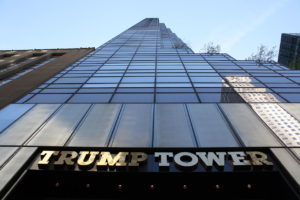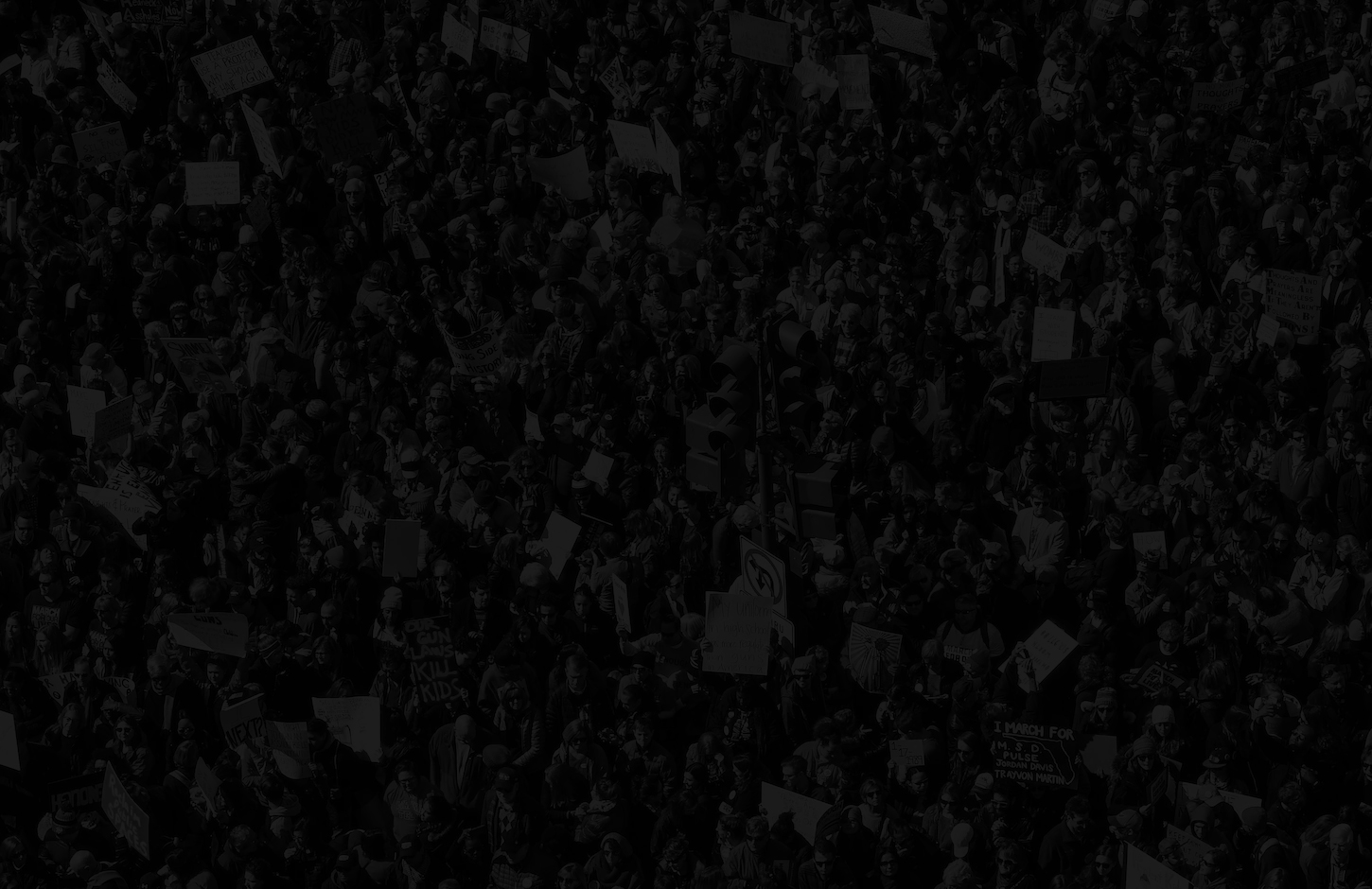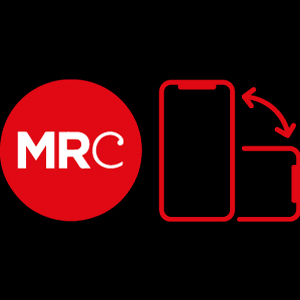
by Victor Pickard
“It may not be good for America, but it’s damn good for CBS.”
—Les Moonves, CEO of CBS, when discussing Trump’s candidacy
Donald Trump’s ascendance has many
enablers, but news media deserve special scrutiny. Television news in particular has popularized Trump—and, in doing so, has turned our political process into a reality TV spectacle. Even when attacking, news media are boosting his visibility. And even as
he attacks them—threatening to change libel laws, mocking and feuding with journalists,
holding campaign events where members of the press are
corralled and roughed-up—he serves media well. Because
the news organizations that cover Trump are
making obscene amounts of money.
This
symbiotic relationship has gained some
recent attention, even “
media culpas,” from the press.
The New York Times reported that Trump has received nearly
$2 billion in free media coverage since he began his campaign. And a study on newsworthiness tallied that during 2015,
Trump received 327 minutes of nightly broadcast network news coverage, compared with Hillary Clinton’s 121 minutes and Bernie Sanders’ 20 minutes.
While it’s tempting to blame the audience for this skewed coverage, it’s far more complicated. “We simply give people what they want” has been the industry’s go-to justification for cheap and shoddy programming since the dawn of commercial media. Just because it’s hard to look away doesn’t mean we crave constant spectacle instead of substantive news. And though it’s difficult to imagine an alternative when options are lacking, we can still dare to dream that a better media system is possible—one that does not sensationalize and trivialize matters of profound importance to the future of our democracy and of our planet.
Much popular media criticism decries specific journalists or news organizations’ individual failures. But this suggests that the problem lies with only a few bad apples. Rarely do we consider the underlying
structural reasons for why our media system operates as it does. This is not to imply there’s a cabal of media owners who meet in smoky backrooms to plot the manipulation of the masses. Rather, we can better understand the “
trumpification of the media” by focusing on the commercial logic that drives it. This draws attention to the root of the problem: the commercial pressures and profit imperatives that encourage particular types of news coverage.
Commercial news media are first and foremost businesses, and Trump is pure gold for their bottom line. He keeps ratings high and ad sales strong. Conflict and controversy attract eyeballs, and our hypercommercialized media system cares most about what sells advertising—not what informs or enriches our democratic discourse. Most commercial media organizations, whether cable news, broadcast news, newspapers, and increasingly websites, profit most by serving up audiences to advertisers who pay big money. That’s why media CEOs hear a
ka-ching! every time Donald Trump appears on the screen.
How did this happen? How did the US end up with a system that, in many sectors, is dominated by a handful of corporations, is only lightly regulated by public interest protections, and is largely commercial with only weak public alternatives? Suffice it to say that this system didn’t emerge from entirely democratic decisions; it arose instead from
a history of commercial interests winning out over others.
Other democracies have developed strikingly different media systems, which aren’t simply reflections of taste, culture, and style. These differences arise from structural factors, and they affect the quality of information that audiences receive.
Research has shown that commercialized news correlates with low political knowledge. Compared to other countries’ media systems, ours is extremely commercialized, and few Americans realize how much of a global outlier we are in
our meager funding of public media.
For the past 100-plus years the US has tried to sustain its experiment in commercialized journalism by treating news as both a commodity and a public service. While a perfect division never existed, the news industry (often out of fear of public backlash and government intervention) has long sought to prevent commercial imperatives from overwhelming democratic necessities. Today any vestiges of that always-porous divide are quickly eroding. Television news media demonstrate this most blatantly, but digital print media suggest similar trends with the rise of ubiquitous click-bait exposing readers to
invasive and
deceptive advertising. With ever-diminishing revenues for hard journalism, this trajectory is troubling—and symptomatic of our media system’s larger structural problems.
We often forget that our hypercommercialized media system is the product of policy decisions and not some act of nature. So it doesn’t have to be this way; a different system was possible—and it
still is. Alternative models, both from the American past and from other countries, show us that different systems are viable. But they require
policy interventions to establish structural safeguards and incentives for responsible and informative media. We could create a stronger public media system (one that actually behaves differently from its commercial counterparts), experiment with non-profit models,
break up media monopolies, and promote meaningful public service obligations that encourage high journalistic standards and practices. Taken together, these efforts might help prevent commercialism from trumping democracy.
Of course, we cannot blame media for all that ails us.
Admirable attempts have been made to hold Trump accountable for his dangerous and false statements, and it’s not clear that more
fact-checking could deflate his campaign, especially now. But the constant breathless coverage and the bending of norms—like allowing Trump
to call in to news shows—is inexcusable. The irresponsible news coverage that now surrounds us doesn’t align with basic democratic ideals for a Fourth Estate. Even if it’s “
damn good for CBS,” our news media shouldn’t be allowed to recklessly pursue commercial interests to our collective detriment. As the screen-to-screen coverage of Trump attests, the commercial capture of our news system paves the way for greater evils.
 by Victor Pickard
“It may not be good for America, but it’s damn good for CBS.”
—Les Moonves, CEO of CBS, when discussing Trump’s candidacy
Donald Trump’s ascendance has many enablers, but news media deserve special scrutiny. Television news in particular has popularized Trump—and, in doing so, has turned our political process into a reality TV spectacle. Even when attacking, news media are boosting his visibility. And even as he attacks them—threatening to change libel laws, mocking and feuding with journalists, holding campaign events where members of the press are corralled and roughed-up—he serves media well. Because the news organizations that cover Trump are making obscene amounts of money.
This symbiotic relationship has gained some recent attention, even “media culpas,” from the press. The New York Times reported that Trump has received nearly $2 billion in free media coverage since he began his campaign. And a study on newsworthiness tallied that during 2015, Trump received 327 minutes of nightly broadcast network news coverage, compared with Hillary Clinton’s 121 minutes and Bernie Sanders’ 20 minutes.
While it’s tempting to blame the audience for this skewed coverage, it’s far more complicated. “We simply give people what they want” has been the industry’s go-to justification for cheap and shoddy programming since the dawn of commercial media. Just because it’s hard to look away doesn’t mean we crave constant spectacle instead of substantive news. And though it’s difficult to imagine an alternative when options are lacking, we can still dare to dream that a better media system is possible—one that does not sensationalize and trivialize matters of profound importance to the future of our democracy and of our planet.
Much popular media criticism decries specific journalists or news organizations’ individual failures. But this suggests that the problem lies with only a few bad apples. Rarely do we consider the underlying structural reasons for why our media system operates as it does. This is not to imply there’s a cabal of media owners who meet in smoky backrooms to plot the manipulation of the masses. Rather, we can better understand the “trumpification of the media” by focusing on the commercial logic that drives it. This draws attention to the root of the problem: the commercial pressures and profit imperatives that encourage particular types of news coverage.
Commercial news media are first and foremost businesses, and Trump is pure gold for their bottom line. He keeps ratings high and ad sales strong. Conflict and controversy attract eyeballs, and our hypercommercialized media system cares most about what sells advertising—not what informs or enriches our democratic discourse. Most commercial media organizations, whether cable news, broadcast news, newspapers, and increasingly websites, profit most by serving up audiences to advertisers who pay big money. That’s why media CEOs hear a ka-ching! every time Donald Trump appears on the screen.
How did this happen? How did the US end up with a system that, in many sectors, is dominated by a handful of corporations, is only lightly regulated by public interest protections, and is largely commercial with only weak public alternatives? Suffice it to say that this system didn’t emerge from entirely democratic decisions; it arose instead from a history of commercial interests winning out over others.
Other democracies have developed strikingly different media systems, which aren’t simply reflections of taste, culture, and style. These differences arise from structural factors, and they affect the quality of information that audiences receive. Research has shown that commercialized news correlates with low political knowledge. Compared to other countries’ media systems, ours is extremely commercialized, and few Americans realize how much of a global outlier we are in our meager funding of public media.
For the past 100-plus years the US has tried to sustain its experiment in commercialized journalism by treating news as both a commodity and a public service. While a perfect division never existed, the news industry (often out of fear of public backlash and government intervention) has long sought to prevent commercial imperatives from overwhelming democratic necessities. Today any vestiges of that always-porous divide are quickly eroding. Television news media demonstrate this most blatantly, but digital print media suggest similar trends with the rise of ubiquitous click-bait exposing readers to invasive and deceptive advertising. With ever-diminishing revenues for hard journalism, this trajectory is troubling—and symptomatic of our media system’s larger structural problems.
We often forget that our hypercommercialized media system is the product of policy decisions and not some act of nature. So it doesn’t have to be this way; a different system was possible—and it still is. Alternative models, both from the American past and from other countries, show us that different systems are viable. But they require policy interventions to establish structural safeguards and incentives for responsible and informative media. We could create a stronger public media system (one that actually behaves differently from its commercial counterparts), experiment with non-profit models, break up media monopolies, and promote meaningful public service obligations that encourage high journalistic standards and practices. Taken together, these efforts might help prevent commercialism from trumping democracy.
Of course, we cannot blame media for all that ails us. Admirable attempts have been made to hold Trump accountable for his dangerous and false statements, and it’s not clear that more fact-checking could deflate his campaign, especially now. But the constant breathless coverage and the bending of norms—like allowing Trump to call in to news shows—is inexcusable. The irresponsible news coverage that now surrounds us doesn’t align with basic democratic ideals for a Fourth Estate. Even if it’s “damn good for CBS,” our news media shouldn’t be allowed to recklessly pursue commercial interests to our collective detriment. As the screen-to-screen coverage of Trump attests, the commercial capture of our news system paves the way for greater evils.
by Victor Pickard
“It may not be good for America, but it’s damn good for CBS.”
—Les Moonves, CEO of CBS, when discussing Trump’s candidacy
Donald Trump’s ascendance has many enablers, but news media deserve special scrutiny. Television news in particular has popularized Trump—and, in doing so, has turned our political process into a reality TV spectacle. Even when attacking, news media are boosting his visibility. And even as he attacks them—threatening to change libel laws, mocking and feuding with journalists, holding campaign events where members of the press are corralled and roughed-up—he serves media well. Because the news organizations that cover Trump are making obscene amounts of money.
This symbiotic relationship has gained some recent attention, even “media culpas,” from the press. The New York Times reported that Trump has received nearly $2 billion in free media coverage since he began his campaign. And a study on newsworthiness tallied that during 2015, Trump received 327 minutes of nightly broadcast network news coverage, compared with Hillary Clinton’s 121 minutes and Bernie Sanders’ 20 minutes.
While it’s tempting to blame the audience for this skewed coverage, it’s far more complicated. “We simply give people what they want” has been the industry’s go-to justification for cheap and shoddy programming since the dawn of commercial media. Just because it’s hard to look away doesn’t mean we crave constant spectacle instead of substantive news. And though it’s difficult to imagine an alternative when options are lacking, we can still dare to dream that a better media system is possible—one that does not sensationalize and trivialize matters of profound importance to the future of our democracy and of our planet.
Much popular media criticism decries specific journalists or news organizations’ individual failures. But this suggests that the problem lies with only a few bad apples. Rarely do we consider the underlying structural reasons for why our media system operates as it does. This is not to imply there’s a cabal of media owners who meet in smoky backrooms to plot the manipulation of the masses. Rather, we can better understand the “trumpification of the media” by focusing on the commercial logic that drives it. This draws attention to the root of the problem: the commercial pressures and profit imperatives that encourage particular types of news coverage.
Commercial news media are first and foremost businesses, and Trump is pure gold for their bottom line. He keeps ratings high and ad sales strong. Conflict and controversy attract eyeballs, and our hypercommercialized media system cares most about what sells advertising—not what informs or enriches our democratic discourse. Most commercial media organizations, whether cable news, broadcast news, newspapers, and increasingly websites, profit most by serving up audiences to advertisers who pay big money. That’s why media CEOs hear a ka-ching! every time Donald Trump appears on the screen.
How did this happen? How did the US end up with a system that, in many sectors, is dominated by a handful of corporations, is only lightly regulated by public interest protections, and is largely commercial with only weak public alternatives? Suffice it to say that this system didn’t emerge from entirely democratic decisions; it arose instead from a history of commercial interests winning out over others.
Other democracies have developed strikingly different media systems, which aren’t simply reflections of taste, culture, and style. These differences arise from structural factors, and they affect the quality of information that audiences receive. Research has shown that commercialized news correlates with low political knowledge. Compared to other countries’ media systems, ours is extremely commercialized, and few Americans realize how much of a global outlier we are in our meager funding of public media.
For the past 100-plus years the US has tried to sustain its experiment in commercialized journalism by treating news as both a commodity and a public service. While a perfect division never existed, the news industry (often out of fear of public backlash and government intervention) has long sought to prevent commercial imperatives from overwhelming democratic necessities. Today any vestiges of that always-porous divide are quickly eroding. Television news media demonstrate this most blatantly, but digital print media suggest similar trends with the rise of ubiquitous click-bait exposing readers to invasive and deceptive advertising. With ever-diminishing revenues for hard journalism, this trajectory is troubling—and symptomatic of our media system’s larger structural problems.
We often forget that our hypercommercialized media system is the product of policy decisions and not some act of nature. So it doesn’t have to be this way; a different system was possible—and it still is. Alternative models, both from the American past and from other countries, show us that different systems are viable. But they require policy interventions to establish structural safeguards and incentives for responsible and informative media. We could create a stronger public media system (one that actually behaves differently from its commercial counterparts), experiment with non-profit models, break up media monopolies, and promote meaningful public service obligations that encourage high journalistic standards and practices. Taken together, these efforts might help prevent commercialism from trumping democracy.
Of course, we cannot blame media for all that ails us. Admirable attempts have been made to hold Trump accountable for his dangerous and false statements, and it’s not clear that more fact-checking could deflate his campaign, especially now. But the constant breathless coverage and the bending of norms—like allowing Trump to call in to news shows—is inexcusable. The irresponsible news coverage that now surrounds us doesn’t align with basic democratic ideals for a Fourth Estate. Even if it’s “damn good for CBS,” our news media shouldn’t be allowed to recklessly pursue commercial interests to our collective detriment. As the screen-to-screen coverage of Trump attests, the commercial capture of our news system paves the way for greater evils.


